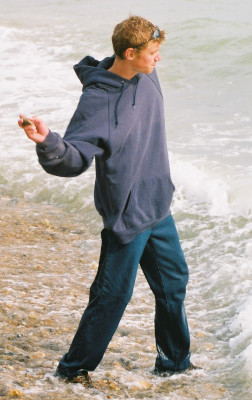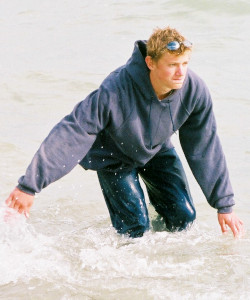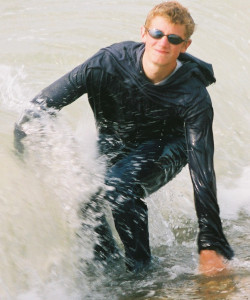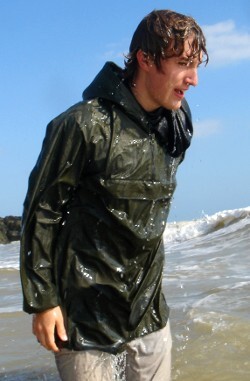Surf Swimming
Perhaps the most challenging survival situation is sea survival. You must be resourceful to survive. Use the sidestroke or breaststroke to conserve strength.
Swimming out is fun and relatively easy as you jump over the waves or dive underneath them. This is exciting and challenging.
The real skill is in getting back to shore safely. If the surf is moderate, ride in on a wave by swimming forward with it. Dive to a shallow depth to end the ride just before the wave breaks.
In high surf, try to swim toward shore in the trough between waves. When the seaward wave approaches, face it and submerge. After it passes, swim toward shore in the next trough.
If caught in the undertow of a large wave, push off the bottom or swim to the surface
and proceed toward shore as above.
Landing on a Rocky Shore
This should only be done as a last resort as there is a substantial risk of injury.
If you must land on a rocky shore, look for a place where the waves rush up onto the rocks. Avoid places where waves explode with a high white spray. Swim slowly when making your approach. You will need your strength to hold on to the rocks.
After selecting your landing point, advance behind a large wave into the breakers. Face toward shore and take a sitting position with your feet in front, 60 to 90 centimetres (2 or 3 feet) lower than your head. This position will let your feet absorb the shock when you land or strike submerged boulders or reefs.
If you do not reach shore behind the wave you picked, swim with your hands only. As the next wave approaches, take a sitting position with your feet forward. Avoid small crags where your feet could get stuck. Repeat the procedure until you land.
Climb up as you would on land on a rocky hillside.
Keep your feet close together and your knees slightly bent in a relaxed sitting posture
to cushion the blows against the rock.
Learn Sea Survival Swimming
Part of your lifeguard training may be to get used to the wild outdoors. Gain confidence in open water no matter what you wear.
When the weather is wet and rainy, put on your adventure clothes and go for a run, swim, or cycling trip. Do not swim alone. Take a few friends along. It's more fun too.
The beach has a few more challenges than the pool, like waves, wind, tides, and underwater obstacles. Go to a lifeguarded beach, tell the lifeguards that you will swim in your clothes and where you go. We recommend you stay close to shore. There is no reason to swim out far.
Recommended Clothing:
T-shirt, jeans, hoodie or anorak, robust socks and shoes.


Wade in carefully. Your clothes soak up water and get heavy as you move. Footballers use this effect to train their leg muscles.

Wade in chest deep. Watch out for underwater rocks.

Start wading around. Feel the resistance of waterlogged clothes. They slow you down, but don't pull you down.

Now lay back and float. Water weighs nothing in water, but clothes will be heavy when you come out or climb into boats.

Breaststoke works best when swimming in clothes. Front crawl is not much faster but wears you out quickly.

When you get out, wave surges can push you over. Keep an eye on the waves near the shore. Dumpers can catch you out.

Shallow water running in wet clothes can be quite tough. Practice this often to get fit.

Are you cool enough to swim outdoors fully clothed, always ready to perform a rescue?
Reader Comments

Sea survival swimming is the best, so envigorating and huge fun.
~Moritz, Hamburg, Germany

My friend and I enjoy sea survival swimming a lot. It is fantastic strength training, but is very exhausting because we always swim fully clothed for fun and fitness.
~Yves and Ooli, Dieppe, France

All summer long I swim in the sea, no matter what. If the weather is a bit cold, I wear more clothes to keep warm.
~Helgo, Germany